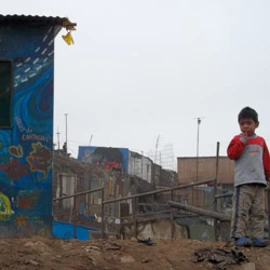One health, one world: A holistic approach to human, animal, plant and environmental health
April 29, 2014.
by Christian Borgemeister, Joachim von Braun and Solvay Gerke.
Practiced since thousands of years by pastoralists, the health of humans and their livestock were always treated as one. However, in Europe during the middle ages human and animal health started to develop into different directions. Only in the 19th century modern medicine scientists started favoring closer links between veterinary and human medicine. However, the great discoveries in the bio-sciences during the 20th century led to an ever increasing specialization and compartmentalization of the health disciplines. Yet, towards the end of the century the inherent inter-linkages between the health of humans and animals became more prominent in the scientific discourse.
Human diseases with zoonotic causes
Especially the severe acute respiratory syndrome or SARS epidemic and the rapid spread of the H5N1 strain of avian influenza significantly changed the health landscape, leading to alliances like the one health commission of the US American human and veterinary health associations (<link https: www.onehealthcommission.org external-link-new-window external link in new>www.onehealthcommission.org) and a recent tripartite agreement between WHO, FAO and OIE, the World Animal Health Organization. Nearly three quarters of all emerging human infectious diseases in the past three decades were zoonotic. For example, Rift valley fever is a viral disease transmitted by mosquitoes that affects both livestock and humans. A particularly telling example is West Nile virus, another mosquito transmitted disease. Prior to its arrival in North America in the late 20th century, West Nile was a rather obscure and ill studied disease, occurring sporadically in Central Africa. The zoonotic nature of West Nile, i.e. that it is primarily a bird disease, was only discovered after it was reported in the greater New York area.
One world, one health
In parallel to this convergence of human and animal health sciences under the one health umbrella, recently a broader, more holistic approach to health and its interdependence with the environment emerged, often coined eco-health. Here ecological interactions but also participation and trans-disciplinarity are key characteristics. In particular a close collaboration of natural and social sciences is pivotal here.
Impact of environment on human health: case study Amazonas
Especially the effects of environmental degradation and agricultural intensification on the health of the environment in general, and that of humans in particular have been illustrated in key eco-health case studies. For instance deforestation can have a huge impact on the spread of infectious diseases, as shown for malaria in the Peruvian Amazon. As a consequence of road construction small water bodies along the road sides are created which are ideal breeding grounds for mosquitoes. Additionally, these activities expose previously isolated communities to the outside world, often leading to the introduction of infectious diseases like malaria into these villages. To prevent misunderstandings: road infrastructure is of utmost importance for rural development.
Case studies like this illustrate how interlinked agriculture and agricultural practices and the health of humans, as producers as well as consumers, are, exemplifying the need to ‘think’ one health. Moreover, it shows that technical interventions at one end of the value chain can have cascading effects at the other end by ameliorating the wellbeing of men.
ZEF's research programs on health-related issues
ZEF is increasingly engaged in this field of research. For instance the EU-supported FOODSECURE program looks at the drivers of food and nutrition security. Under this program, for instance the linkages between agricultural innovation, service delivery and child nutrition are analyzed, and policy options for action explored. About 45 percent of mortality of children under 5 years of age, i.e. about 3 Million deaths per annum, are caused by nutrition related causes, and the linkages of this global problem to agriculture and food security are strong. The water, sanitation and health or WATSAN project, supported by the Bill and Melinda Gates Foundation, investigates pro-poor investments in the nexus of domestic water quality and quantity, sanitation and hygiene, and agriculture from the bottom-up. Studies in India, Bangladesh, Ghana, and Ethiopia under this program with local communities address opportunities to overcome the complex burden of disease problems arising from the unhealthy set of nexus problems, especially in peri-urban contexts. Funded by the EU and DFG, the health impact of water access in urban China and India project looks at the relation between water management, health issues, and urban planning in the context of fast-expanding and globalizing tourism-based economies in China and India.The study advocates an integrated urban planning approach and a decentralized or hybrid sanitation system.
Inter and trans-disciplinary research approach
These examples illustrate how close collaboration between the natural and social sciences can overcome the traditional ‘silo’ mentalities of the respective disciplines, leading to a more all- encompassing understanding of health. Because of its inherent interdisciplinary nature ZEF is in a prime position to continue and expand making substantive contributions to one health in the one world.
This text is an excerpt from the lead article of ZEF's Annual Report 2012-2013. Read the full<link fileadmin webfiles downloads news website_2014_various lead_article_ar_12-13.pdf download file> lead article in ZEF's Annual Report 2012-2013.



